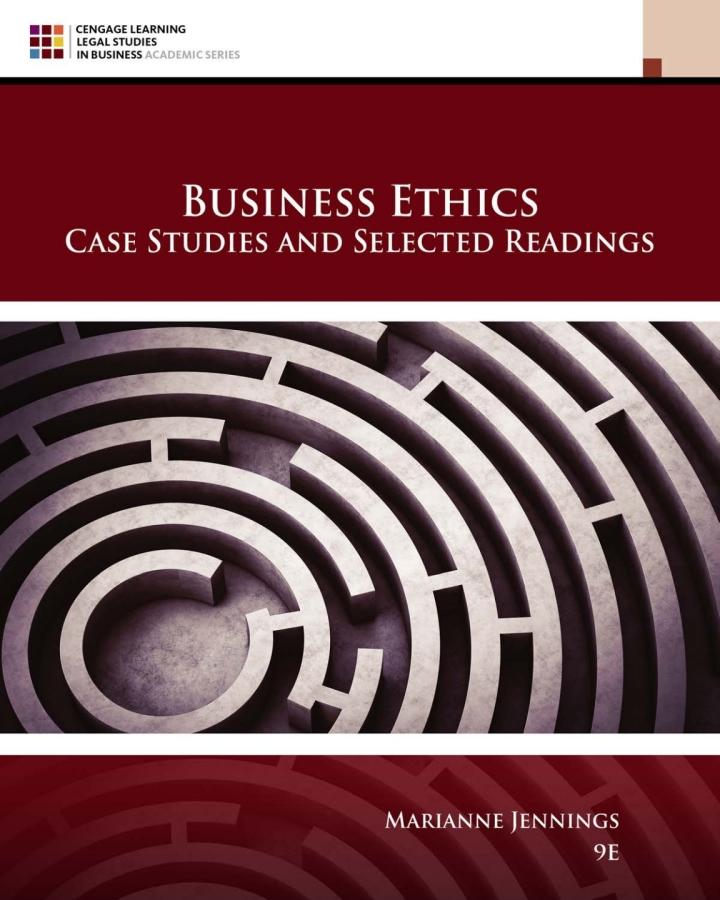Morton Thiokol, Inc., an aerospace company, manufactures the solid-propellant rocket motors for the Peacekeeper missile and the
Question:
Morton Thiokol, Inc., an aerospace company, manufactures the solid-propellant rocket motors for the Peacekeeper missile and the missiles on Trident nuclear submarines. Thiokol also worked closely with the National Aeronautics and Space Administration (NASA) in developing the Challenger, one of NASA's reusable space shuttles.
Morton Thiokol served as the manufacturer for the booster rockets used to launch the Challenger. NASA had scheduled a special launch of the Challenger for January 1986. The launch was highly publicized, because NASA had conducted a nationwide search for a teacher to send on the flight. For NASA's 25th shuttle mission, teacher Christa McAuliffe would be on board.
On the scheduled launch day, January 28,1986 , the weather was cloudy and cold at the John F. Kennedy Space Center in Cape Canaveral, Florida. The launch had already been delayed several times, but NASA officials still contacted Thiokol engineers in Utah to discuss whether the shuttle should be launched in such cold weather. The temperature range for the boosters, as specified in Thiokol's contract with NASA, was between \(40^{\circ} \mathrm{F}\) and \(90^{\circ} \mathrm{F}\).
The temperature at Cape Canaveral that January morning was below \(30^{\circ} \mathrm{F}\). The launch of the Challenger proceeded nevertheless. A presidential commission later concluded, "Thiokol management reversed its position and recommended the launch of [the Challenger] at the urging of [NASA] and contrary to the views of its engineers in order to accommodate a major customer...............
\section*{Discussion Questions}
1. Who is responsible for the deaths that resulted from the Challenger explosion?
2. If you had been in Allan McDonald's or Roger Boisjoly's position on January 28, 1986, what would you have done?
3. Evaluate Locke's comment on the loss of 10 cents per share.
4. Should the possibility that the booster rockets might not perform below \(30^{\circ} \mathrm{F}\) have been a factor in the decision to allow the launch to proceed?
5. Roger Boisjoly offered the following advice on whistleblowing:
- You owe your organization an opportunity to respond. Speak to them first verbally. Memos are not appropriate for the first step.
- Gather collegial support for your position. If you cannot get the support, then make sure you are correct.
- Spell out the problem in a letter. \({ }^{699}\) Mr. Boisjoly acknowledges he did not gather collegial support. How can such support be obtained? Where would you start? What would you use to persuade others?
6. Scientist William Lourance has written that "a thing is safe if its attendant risks are judged to be acceptable." \({ }^{\text {"900 }}\) Had everyone, including the astronauts, accepted the risks attendant to the Challenger's launch?
7. Groupthink is defined as a mode of thinking that people engage in when they are deeply involved in a cohesive in-group, when the members' strivings for unanimity override their motivation to realistically appraise alternative courses of action. Groupthink refers to the deterioration of mental efficiency, reality testing, and moral judgment that results from in-group pressures. \({ }^{691}\) In another NASA accident, a launch pad fire took the lives of Apollo I astronauts Gus Grissom, Ed White, and Roger Chaffee on January 30, 1967. Gene Krantz, the Mission Control Flight Director, addressed his staff by saying, "We were too gungho about the schedule and we locked out all of the problems we saw each day in our work.... Not one of us stood up and said, "Damn it, STOP!"692 Is this what happened when Thiokol's management group took off its "engineering hats"?
Step by Step Answer:

Business Ethics Case Studies And Selected Readings
ISBN: 9780357453865
9th Edition
Authors: Marianne M. Jennings





